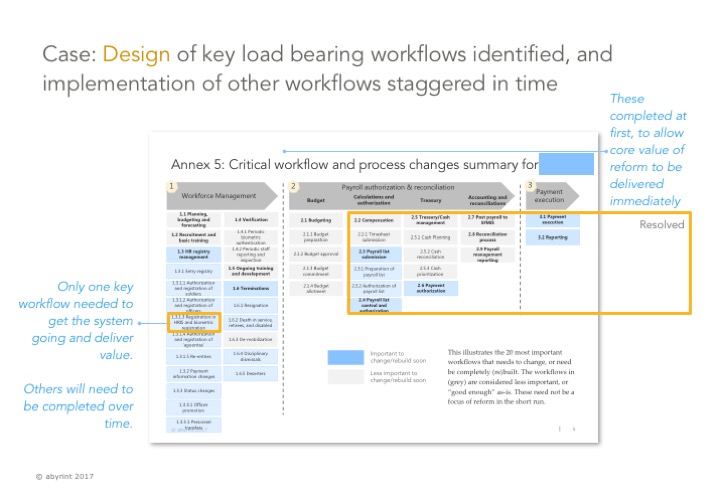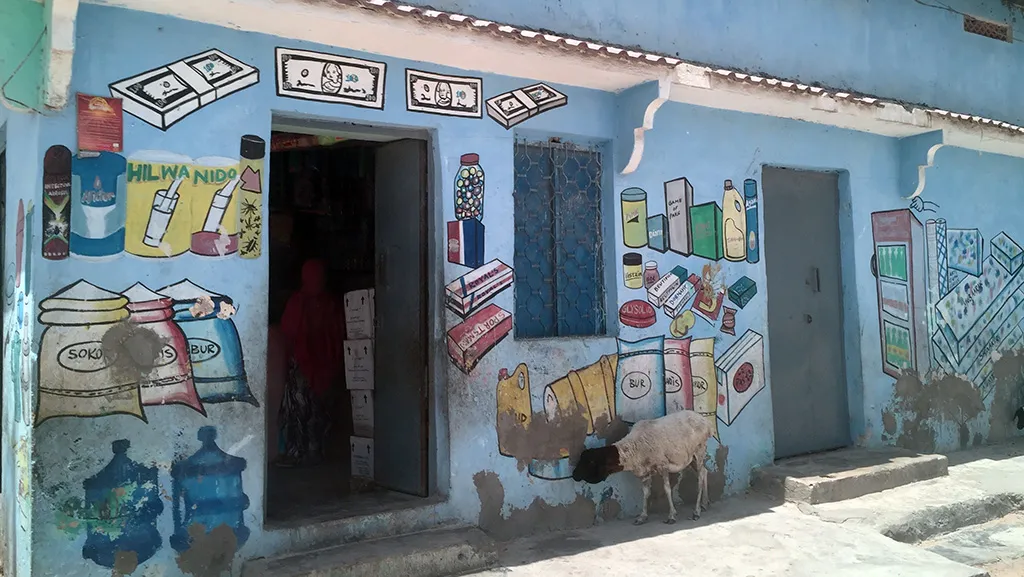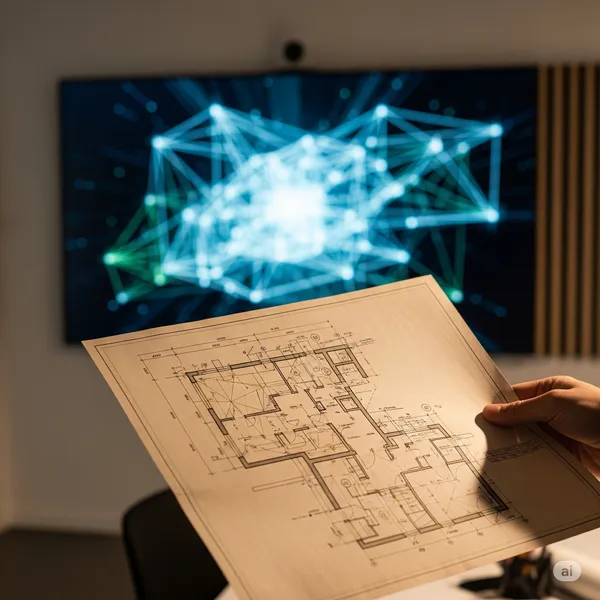Rapid-Impact Reform Design - Delivering Immediate Value in Public Sector Transitions
Published on: Mon Dec 11 2017 by Ivar Strand
Why is designing to realize value quickly so important
Core government systems can be designed to deliver outcomes quickly and cheaply. This is especially important in fragile states. Those governments are very difficult to rebuild. The approaches should be very considerate and adapted to the specificities of that country.
An important element of this is to build minimum viable solutions. These are designed to deliver the main outcomes of the reform very quickly.
This is in contrast to the classical approach. A large scale reform program is designed with all the bells and whistles of government systems. The model may be Denmark or some other “best case” solution.
Important is the difference in implementation logic. The approach in a large scale transformation program is that the benefits are only delivered after implementation of all major aspects of the program. Switch it on first when it is all developed.
The problem is it may never get to that stage. Much is spent on preparation. Benefits are postponed, or in the worst case, not realized at all. This can result in much loss of resources, wasted time and effort.
Consider this experience from the Police in Norway. Government scrapped a 300 million USD IT project after years of delay and cost overruns. And importantly, the program did not yet deliver useful features for the end users. Interestingly, the same government later built a small application for less than 40.ooo dollars, delivering critical benefits for the police force operations within weeks. While this application did not cover all of the needs foreseen in the bigger project, it did deliver on some critical aspects, and most importantly, it delivered immediately.
This is a bigger problem in a fragile state. Politics are volatile. There is minimal capacity to manage complex programs. There is little and unpredictable donor financing. If it is difficult to rebuild government functions in Norway, it is impossible in a fragile state.
The better approach is to design the absolute minimum viable solution and implement this first. This solution should quickly deliver the core functionalities of the reform. More complex system features can be added later. Those are elements may be necessary in the long run, but are not needed immediately.
There are different ways of designing for delivering value quickly. There are good, bad and ugly approaches to design of reform programs that we have written about here. There are many fallacies to avoid. There are useful design principles to follow.
It is difficult to get this right. No question that it is hard. Designing for minimum viable solutions is more difficult than designing after a blueprint from another country. But there isn’t much choice.
Select a design that is tailored to deliver functionality quickly. This is a key choice when rebuilding core state functions in a fragile state. Find the minimal viable solution that will deliver the core functions that are needed.
Focus on the features that deliver critical functionality
The key design principle is to focus on those few elements that are needed to achieve the functionality. Minimally. These features shall also be implemented first. The idea is to realize value quickly. More advanced reform elements can be implemented later.
In the physical world, this is the equivalent of building the load bearing walls first. And include the roof if building in an area with rain and snow. This creates a space were the builders can continue to refine the construction while being protected from the elements. And the building can be made bigger later.
Think about this as getting in place those critical load bearing building blocks is often sufficient to get the system going and deliver value immediately.
This is different from a prototype and experimentation. These core building blocks are meant to form part of the full design later.
We design for full scale from the get-go. Because, work to rebuild core government systems requires so much change in behavior from so many people, political authorization, and requirements for logical interfaces with many other systems. Experimentation is rarely an option. It has to be right from the get-go.
This is also different from interim solutions or quick fixes. Building for value immediately focuses on core building blocks that will also form the foundation of next stage systems. This is built to last.
Most of the other elements of the system will be needed eventually, but they may take much longer time to complete, and the opportunity cost of waiting can be very high.
Case: Military finance reform that realized value quickly
We have earlier written about how the government payroll system in Somalia was rebuilt over the course of six weeks. The core functionalities were delivered almost immediately. Incremental improvements have since been implemented. Such programs often takes years.
Somalia, as in many other fragile states, financed the security sector largely outside of the control of the treasury. We worked with government to design a long term systemic solution. But importantly, where the first stage of reforms could deliver value quickly. The core fucntionalities would be delivered within months, and not years. This would allow political momentum to be sustained, and allowing more time to incrementally build the other more complex elements.
In this case, there were key design elements that enabled government to execute the reforms and quickly:
- First, implement the minimum viable solution that ensured soldiers were paid directly on their personal bank account and under control of the treasury. This utilized existing technology in government and at a low-cost price point for implementation. This focused on core function sonly, but ensured that everything was scaleable to the second and third phase.
- Other reform elements, that were considered important, but less urgent and more complex and expensive, were pushed to a second stage.
- A third set of features were considered ideal, but unnecessary over the medium term, and a choice was made to disregard these completely.
See the exhibit below for an illustration.
Accomplishing this in a fragile state is quite unique. Security sector financing is very complex. There are few, if any, fragile states that are able to control the security sector from the treasury, and indeed, pay individual soldiers on their bank accounts. More often than not, large cash amounts are slushed around in the system. Somalia has set out to change all of that.
The exhibit below illustrates the design and implementation. There are very many design elements that eventually will be implemented. By prioritizing the minimum viable solution, value was delivered immediately and at low cost.
The orange boxes illustrate the first minimum viable solution, the blue boxes the second stage reforms, and the grey boxes, third stage reforms. It’s all designed to be consistent and scalable as the reform progresses, and all efforts under phase one, are load bearing walls for the second and third phase.

At Abyrint we work to support governments to rebuild their systems. We specialize in supporting fragile states.
In a series of articles we focus on some of the core ideas that guide our work. We hope you find it useful. Let us know.
@abyrint team



